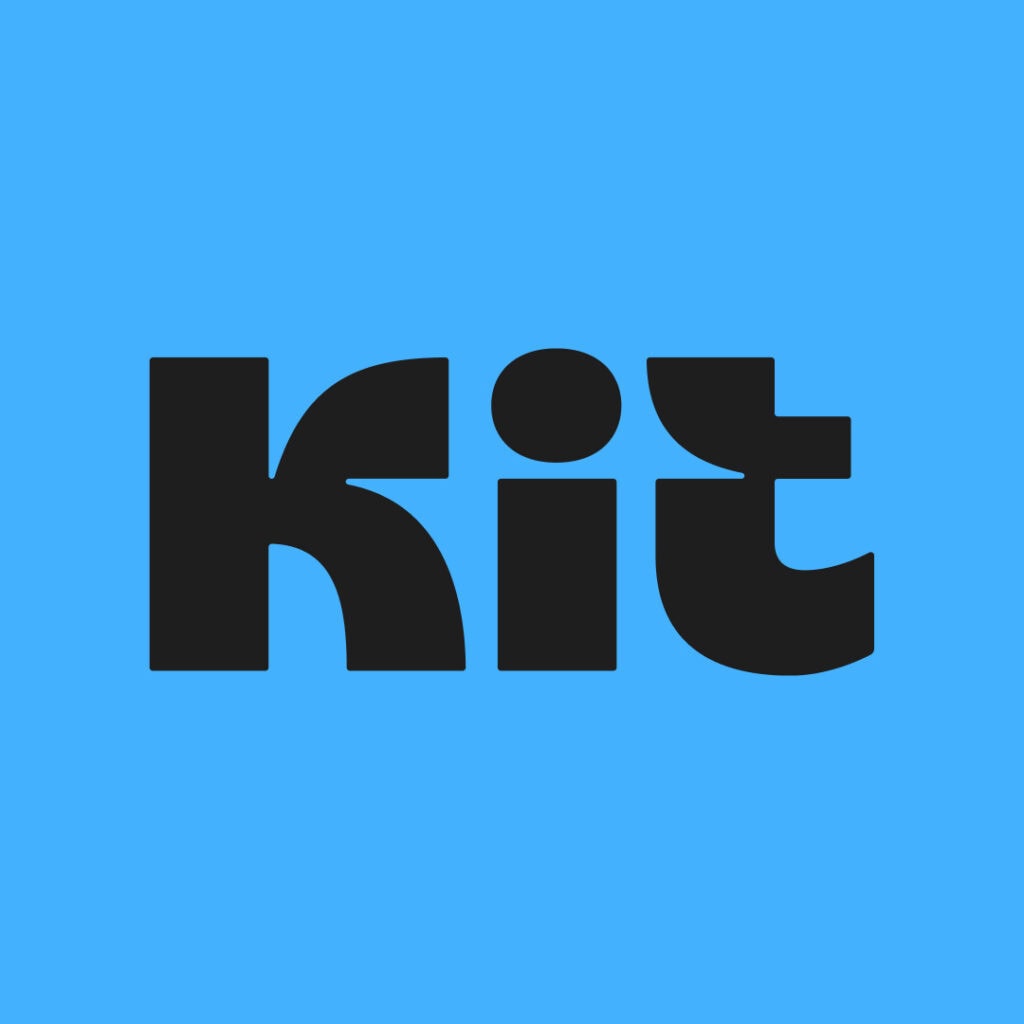
This post may contain affiliate links, meaning I may receive a commission if you purchase through my links. I only recommend products I have personally tested or have thoroughly researched. All opinions are my own. Please read the full disclosure for more information.
Online courses have become a go-to for many online entrepreneurs to create an additional income stream in their businesses. And for good reason.
With an online course, and the expertise and know-how of a niche topic, you can create an online course once and sell it repeatedly, making it one of the best means of passive income.
Additionally, with an online course, you can often establish a bit of a brand when you create a course since your audience will see you as an expert on that topic. Thankfully though, you don’t have to be an expert. You really only need to know about 10% more than the students you are teaching.
So let’s dive in and see what it takes to make a digital course.
Here are the tools I recommend for creating a digital course:
How to Make Money With an Online Course
Creating and selling an online course can be a great way to generate income while sharing your expertise with your readers.
It has become much more popular over the past 10-15 years for online entrepreneurs to create an online course to diversify their passive income stream, while also building up their brand.
The best part is that once a course has been created, you can sell it to as many students as you want. And, you can charge whatever price you believe your product is worth.
So, if this is something that you have an interest in starting as well, you will want to start by identifying a topic or niche you are knowledgeable about.
Then, you will want to make sure there is a need for a course on that topic. You can find this out through a little bit of market research.
If you think the market on your particular topic is saturated, don’t worry! This just means that there is demand for the type of content you want to teach your audience.
A key tip from my favorite course creator, Amy Porterfield, is that you “don’t need to be an expert, you just need to know 10% more than the students you teach.”
You can listen to one of her recent podcast episodes about how to turn any skill into a digital course.
Free Course: How to Start a Blog in 7 days
Blogging can be one of the best ways to start building passive income on your own time. Whether you like to side hustle a few hours each week, or a few hours every day, blogging is perfect for anyone wanting to become their own boss and quit their day job.
Learn step-by-step, how to launch a blog and make it a success in just 7 days. You will discover the best tools and tips from an experienced blogger to avoid the mistakes that every beginner makes.
Don’t wait to take back your time and start earning passive income by writing about the things you love and enjoy.
Creating Your First Course
To make money with online courses, start by developing a comprehensive course around a topic you know well.
When you are coming up with ideas for which course topic you want to use, you will need to get super specific. However, you can create a broader topic course. But if you do, you will want to include much more supportive content.
If you’re wanting to dive deeper into just getting started I recommend listening to this episode of Online Marketing Made Easy.
Once you have decided on the topic, it’s time to start planning out your content. Here are a few steps to follow to help you start building your first course.
- Choose a course idea (specific is better)
- Create an outline of your course content (what should be included?)
- Organize your course content (break it up into lessons and modules)
- Cover any FAQ’s, edit, and finalize the content
- Market and launch your course (email marketing, social media, blog, etc.)
While you plan your course content carefully, you will want to break it down into easy-to-follow lessons that include actionable steps.
It can be easy to provide too much content to your students. So, making sure that you keep things clear, and concise while not overwhelming your students will help them succeed.
The more clear and actionable the content, the better.
You will also want to keep your lessons engaging by using videos, quizzes, and downloadable materials to keep students on track and motivated.
Related: 32 Passive Income Ideas to Make a 6-Figure income in 2024
What Does a Successful Course Consist of?
A successful online course consists of well-organized, high-quality course content that delivers real value. The more actionable, the better.
A successful course will not only have good ratings from your previous students but should also show tangible improvements. If your course is titled “How to increase your Instagram followers in 30 days”, you will want to make sure that a majority of your students are seeing those promised results.
The pricing of your course should also align with the actual value of it. You may not be able to successfully charge a specific rate for the amount of time you put into the course. But, you will want the course to be affordable for your ideal student.
You don’t want to price a course that your students will never be able to afford. But, you also don’t want to undervalue the price either.
The course should provide plenty of content, but without overwhelming the student. The more comprehensive your course is, the more likely students will recommend it, which will help boost your sales.
Related: 15 Ways to Actually Make Money Blogging (Free Guide)
Choosing Your Target Audience
When it comes to finding students for your course, you want to keep them in mind as you build it. Rather than finding students for your course, create a course for your students.
Seem a little confusing?
Don’t worry, I’ll explain.
In theory, you can create the coolest product on the market, but if there is no demand for it, you will never make a single sale.
So, rather than creating a course and then trying to find people to buy it, find your people first, and then create the course.
To find your target audience (aka potential customers), you will need to do a little market research. If you have an idea of what type of topic you want to cover, you can start looking for people who are searching on that topic. From here, start asking some questions.
- What do you find difficult about XYZ?
- What is it you want to improve about XYZ?
- Have you purchased a product or service in the past for problem XYZ?
- Did that product/service work, and if not, what didn’t work?
- If you were to buy another product in the future, what would need to be included?
- What price do you think the perfect product/ service/ course would cost for topic XYZ?
Once you have gotten really clear about who your audience is, what their struggles are, their pain point, and desires, it’s time to start creating a course outline.
Related: 32 Passive Income Ideas to Make a 6-Figure income in 2024
What You Need to Build Your Own Online Course
Firstly, you will need to have an idea of what your course is going to be about. And, up until this point, you should have at least a few options to pick from. Remember, the more specific the better.
After you have an idea, it’s time to start looking for a selling platform to create your course and sell the product. I highly recommend ThriveCart as this is what I have used to create my own courses.
After choosing a sales or course platform, it’s time to create the course and market it. I won’t go into too much detail about how or what to include in the course, but when it comes to marketing your course, there are a few things you will want to have in your toolkit.
- Email Marketing Service (I recommend Kit, formerly Convertkit)
- A network of other online entrepreneurs to help you sell your course (people you have worked with and are in a relevant niche)
- Clear-sounding microphone (the BlueYeti is the most recommended mic by podcasters and fellow course creators)
- High-quality webcam (I recommend a 1080-4K camera or better)
- A screen recording software (Zoom often works well and is free for up to 45-minute intervals)
You don’t necessarily need any recording equipment. However, audio and video offer very engaging content and help students learn better than text alone.
Why ThriveCart is the Best Option for a Course Creator
The main reason I recommend ThriveCart over any other sales cart platform is the one-time lifetime pricing. It is a bit higher, but considering the monthly fees of a comparable platform like SamCart, within a year of having a SamCart membership, you will have already paid the same amount for lifetime access to ThriveCart.
There are a few issues with using ThriveCart. Mainly there are some struggles with the course creator not always saving the content you add when you leave your computer idle for a while.
But, the staff at ThriveCart are very good about constantly monitoring any bugs and glitches that show up, and fixing it very quickly.
Choosing a Course Topic
When deciding on a course idea, focus on a subject you’re knowledgeable about and that people are eager to learn. And, if a little bit of market research reveals that others have created courses on the same topic, it means that it is a topic that is in demand.
Your goal is to create a comprehensive course that solves a specific problem or teaches a valuable skill. But, you also don’t want to provide too much information that will overwhelm your students.
So, keeping your course topic specific enough that students won’t be overwhelmed, but general enough to apply to a larger audience is ideal.
You can start by brainstorming topics that align with your expertise, and then research what potential students are looking for.
Once you’ve narrowed down your course idea, consider how to structure your course content to offer step-by-step guidance that’s both engaging and informative. Essentially, brainstorm your idea, and then create a very basic course outline.
- What do your students need to learn to master or understand the skill?
- What are your students struggling with most on this topic?
- Where did you struggle in your own journey?
- Is there a specific order that would make learning much easier?
- What should I avoid putting in the course that I found overwhelming when I learned?
- What content should be a bonus, supplemental, or additional cost?
- Can I create a sequel course for advancing the student to the next level?
A well-planned course will not only attract students but also position you as an expert on the topic. So, making a 6-figure income as a course creator is not as difficult as it may seem, because soon your future students will seek you out before your next launch.
Related: 30 Proven, Realistic & Legit Ways to Make $1000 a Day in 2025
Best Online Course Platforms to Build a Course
Choosing the right selling platform is crucial to the success of your online course. But, it isn’t a deal breaker either.
Some of the best courses I have purchased in the past have only been a simple PDF Ebook, and others have been links to exclusive YouTube videos.
So, you don’t have to invest thousands on a platform to sell your course. However, you will need a selling platform that will take payments for you.
Introducing my favorite selling platform and course creator, ThriveCart, which is one of the highest-valued platforms available.
The best platforms are user-friendly and allow you to easily create, market, and sell digital products and courses.
A few others include SamCart, Teachable, Kajabi, Kartra, Gumroad, SendOwl, and more. But, depending on the content you choose to include in your course, you can also sell with Etsy, Shopify, or your own online store.
You will want to look for features like customizable landing pages, integrated sales pages, and tools to track your conversion rate. High-quality platforms, like ThriveCart, will help you maximize conversions by offering a seamless experience for your customers and students.
Whether you’re just starting out or scaling your business, the right platform can make a huge difference. But again, you don’t have to invest right away to see profitable success.
Here’s a few reasons why I so highly recommend ThriveCart:
- Single lifetime payment (no monthly membership)
- Easily integrate 3rd party software and platforms (email marketing, course platforms, etc.)
- It’s a course creator and selling platform (don’t have to pay for another service)
- Costs less than 1 year of SamCart
- Easy to use (drag and drop) course creation process
- Create discounts and coupon codes for sales and holidays
Creating a Membership Site
Alternatively, rather than creating just a digital course, you can create a membership site instead. This might look like monthly coaching sessions, or regular deliveries of content like templates, ebooks, printables, information, etc.
You can also create a hybrid of both a digital course and a membership site.
This is something you can actually do with Thrivecart as well. Which, is another reason why I love it so much!
Building a membership site by using a subscription model is a powerful way to generate consistent income with your online course. Instead of charging a one-time fee, you can offer ongoing access to your content at a lower price, encouraging more people to sign up.
The key is to regularly update your course materials and provide value over time, which keeps members engaged and willing to keep paying each month.
To grow your membership base, you will focus on marketing strategies like offering limited-time discounts, exclusive bonuses, or a free trial. The marketing efforts you will use may be a little different, and a little less, since your income will be more consistent.
With the right approach, a membership site can help you reach 6-figures by creating a steady stream of recurring revenue.
Related:31 Proven Ways to Make Money With a Laptop in 2024
Email Marketing to Sell Your Course
If you’ve never heard, email marketing is one of the best methods of selling to your audience because the return on investment is so much higher than almost every other method, by as much as 42x.
Building an email list is one of the most effective ways to sell your online course and reach 6-figures much quicker. And, the best part is you really don’t need a very big list. You just need an intentional list of highly engaged subscribers.
To build you email list, start by offering a free resource or lead magnet to attract subscribers interested in your course topic.
I recommend starting with Kit (previously Convertkit), where you can get started for free with up to 10,000 subscribers.
Once you have a list, you will need to nurture your audience with valuable content and updates, building trust and anticipation for your course launch.
You can use methods like a webinar, daily social media reels, tips, and even a sneak peek at some of the content in your course to help nurture your list.
One method of nurturing an audience was with an exclusive Facebook group, where there was a ‘BootCamp’ for Pinterest users to gain massive traffic. Lots of free content was provided, as well as some freebies, and gifts.
At the end of this boot camp, and throughout, this course was marketed and launched to try and get as many new students as possible. To increase student sign-ups, there were sneak peeks, but never any full reveals so that students were encouraged to simply sign up for the course.
Similar to that exclusive Facebook group, email marketing allows you to connect directly with potential students and deliver tailored messages that convert and speak to your students.
You can also boost your sales by leveraging affiliate marketing, where your partners promote your course to their own email lists in exchange for a commission. This can greatly expand your reach and increase your revenue, and is a great place to start if this is your first launch.
Related: 15 Expert Strategies to Build an Email List in 2024
Building an Online Course Business
If your big goal is to build a successful online course business, having your own website is a key ingredient. If you look at the most successful course creators, you will see that they have a strong website and online presence.
In addition to being very present online, they also offer regular content to their viewers. Take a look at one of the most successful course creators, Amy Porterfield.
She hasn’t been selling her courses for very long, about 10 years. But, ever since starting her online business in 2009, she has grown and scaled it to earn an average of $5 million every year, mainly from her digital courses.
What makes Amy so successful though, is not just her experience and knowledge, but her presence online. She shows up every day, and engages with her audience. Every week she always produces at least 1 podcast episode – her main content that she creates.
So, back to having your own website. When you have your own space on the internet, you give your audience a place to find you. This is where you show off all of your best content, achievements, and where your readers can sign up for your email, buy your products, and share your content to their friends and family.
Related: How to Start a Profitable Blog and Make Money in 2024
Creating New Courses
Once you’ve launched your first course, creating new courses is a great way to expand your online business and reach your financial goals. By offering multiple courses, you can attract new students with slightly different interests or skill levels.
The easiest way to choose new course ideas is to ask previous students, and you audience what they need help with most. These new courses can be the second step to your beginner courses, but they can also be a different area of your expertise.
For example, if you have a beginner course on “How to start a budget”, your next course could be something like, “How to invest in the stock market”, or “How to diversify your Roth IRA portfolio”.
Use any feedback from your students to develop content that meets their evolving needs.
You can also leverage YouTube videos to introduce your new courses, offering snippets of valuable content and drive traffic to your sales page.
With each new and different course, you increase your chances of converting more potential buyers, growing and diversifying your audience, and building a comprehensive learning experience that keeps your students coming back for more.
A great example of this is a content creator by the name of Heather Ritchie. She has a lot of courses and mini-courses in her shop. And, all her courses are all related to producing better content.
Now, her courses range from writing and improving your email marketing skills, search engine optimization, using A.I. in writing, freelancing, ghostwriting, and more. See how they are all related, but vary a bit from each other?
If you enjoy creating lot of little courses, this is the key to getting loyal students to buy more.
Otherwise, according to some of the most successful course creators, build a solid course, and market it over and over until your reach your financial goal. Then, create your next course, and set your first one on autopilot.
Related: How to Make $60,000 as an Hourly Freelance Videographer
Designing a Course Sales Page
A well-designed course landing page is essential for converting potential buyers into paying students. Your sales page should clearly communicate the value of your course by using engaging copy, visuals, and testimonials to build trust.
The most effective part of a sales page is the social proof. So make sure to get testimonials from your previous students, or beta testers. You can also offer discount incentives or freebies to encourage them to write their feedback.
Highlight the key benefits and results your course offers, making it easy for visitors to understand why they need it. To boost your conversion rate, include a clear call-to-action and make the enrollment process simple. A sales page, and a landing page are a bit different. So, keep this in mind when your consider the graphic design of each page.
A landing page is usually much longer, and shows off the value of the product itself. It may not always explain what all is included, but often will throughout the page.
The purpose of a landing page is to grab the readers attention, and pull them in with relatable struggles, and easy solutions to their problems. The content is typically written in a narrative form, and is directed straight to the reader, so they feel like they are being understood.
On the other side of that, a sales page is meant to entice the reader to make the purchase. So, on this page, you will want to remind them of the high-value of the product they are considering buying, any bonuses they are getting, and any guarantees they should know about.
This page will need to be kept very simple, and direct. Bulleted lists and brief infographics are ideal on this page. The less content the better. So concise words makes converting much easier.
Related: How to Start an Amazon FBA Business (2024 Guide)
Deciding on a Course Price
A well-designed pricing strategy can help you generate significant revenue while delivering value to your audience. The key to pricing is that it doesn’t have to stay the same.
Your price is fluid and can be changed if you need to, at any time.
When setting a price for your first course, it’s important to strike the right balance to attract potential buyers (aka, new students) while boosting your conversion rate.
I highly recommend reading the book The Truth About Pricing: How to Apply Behavioral Economics so Customers Buy, if you want to learn more about the tricks behind pricing. You can easily buy it from Amazon if you like physical copies.
It is an incredibly good read, with very actionable tips. You may also want to check your local library or you library app to see if they have it in stock.
Start by considering the amount of time and effort you’ve invested in creating your course and the value it offers. It’s more important to consider the value offered than how long it took to create the course. Because while you may not get paid a specific hourly rate, you will be able to sell a limitless amount.
You can experiment with different price points to see what resonates best with your audience.
Offering free courses or a lower-priced introductory or beginner course can also build trust and bring in students who might later invest in higher-priced products.
Make sure your course landing page clearly, and concisely communicates the value of your course, and emphasizes why it’s worth the price you’re asking. If you show what’s included, and how it helps your reader solve their problem, then you will often see higher conversion rates.
Ways to Increase Course Sales
To increase your course sales and reach your 6-figure goal, use a variety of marketing strategies to attract potential buyers.
One of the most effective ways is to display social proof, which is often seen in student or customer reviews. You can get these reviews at the end of your course, by emailing your students when they complete the course, or from people who have beta-tested your course.
Another effective tactic is to create a webinar (bonus points if it collects email subscribers), that provides a sneak peek into the same content in your course. And, at the end of the webinar and a little bit throughout, marketing your course to the viewers.
Another option is to create a montage video of student testimonials and add it to your YouTube channel.
You can also use social media marketing to promote your course, running targeted ads and more.
And, don’t forget about affiliate marketing!
By partnering with influencers or other content creators, you can very quickly expand your reach and increase your sales.
If you combine these strategies, you will be able to significantly, and quickly increase your digital course sales without a ton of extra effort.
Free Course: How to Start a Blog in 7 days
Blogging can be one of the best ways to start building passive income on your own time. Whether you like to side hustle a few hours each week, or a few hours every day, blogging is perfect for anyone wanting to become their own boss and quit their day job.
Learn step-by-step, how to launch a blog and make it a success in just 7 days. You will discover the best tools and tips from an experienced blogger to avoid the mistakes that every beginner makes.
Don’t wait to take back your time and start earning passive income by writing about the things you love and enjoy.
Final Thoughts on How to Make Money with an Online Course
Online courses are one of the best options for content creators to make money with their businesses. Since it often requires an initial investment in time and a little money, followed by a little bit of maintenance to keep the content up to date.
Since not all online platforms are the same, finding the right course creator for you is going to be a good starting point for building your course. And, while I personally love and recommend ThriveCart, it may not be the best option for everyone.
However, even though the initial cost of ThriveCart is higher, you have already earned your money back within the first year compared to a membership of SamCart, and other selling platforms.
Therefore, everything after your first year, or if you’ve already made back your initial investment, is pure profit!
Related Articles
- How to Start a Profitable Blog and Make Money in 2024
- 31 Proven Ways to Make Money With a Laptop in 2024
- 15 Expert Strategies to Build an Email List in 2024
- 15 Ways to Actually Make Money Blogging (Free Guide)





